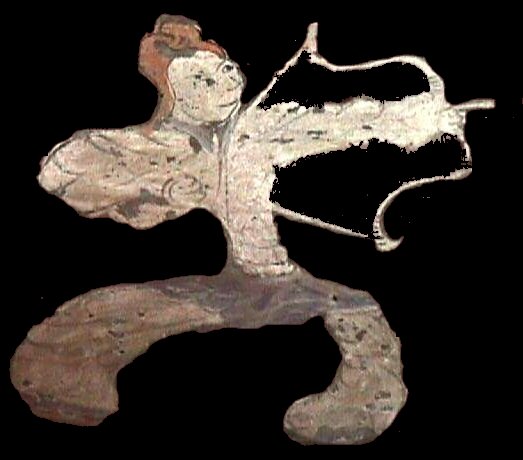
Asian Traditional Archery Research Network (ATARN)
A1, Cloudridge,
30, Plunkett’s Road,
The Peak, Hong Kong.
Tel: (852) 2895-4488
Fax: (852) 2808-2887
email: srselby@atarn.org
April 29, 2001
Dear All,
‘If you want to punch holes in a small yellow circle at a range of fifty metres, get a gun.’ That is what practitioners of Kyudo say about those to whom archery is exclusively about accuracy.
Looking at archers around me, it is clear that there are many who would prefer to shoot with a gun if only the law allowed them to. But here, as in many places, while firearms (and even crossbows) are strictly controlled, bows are not. So they shoot with a bow and enjoy it.
The other day I overcame my reservations about ‘teaching’ and spent a morning training a compound-shooting friend in Chinese archery using a very light, traditional Chinese practice bow. At first, he ridiculed the 24-pound bow and the target butt at 20 paces, which served no purpose other than to make it easier to pick up the spent arrows. But after an hour or so in which we only studied the arm position and grip on the bow, his face suddenly lit up and he said, "It feels as if everything has opened up."
What he had experienced was the sensation of stretching his limbs out fully within the frame of a big bow – but one that did not take much effort to pull. Before the release, he is no longer crabbed within the small circle of his bow. As he releases, his energy seems to burst outwards and forwards. His vision is no longer constrained by aiming. He can feel where his arrows are supposed to go (even if he can not yet always make them go there.).
As you would expect, he was not yet accurate in his shots. Neither am I, which is why I resist ‘teaching’ people to shoot. He will probably never dare to shoot Chinese style when other archers are around, for fear of losing face when he does not hit his mark and having to answer endless questions about why he is ‘wasting his time’ learning a skill which seems to promote inaccuracy.

I make these remarks in relation to Chinese archery for that is what I know about; but I think they apply to instinctive archery in general. My vision for the coming ten years (let’s not talk of the Millennium) is a to try to cater to an interest in the more spiritual sides of life through promoting traditional archery.
Think of the possibilities. North and South Korea share a common tradition of archery. So do Northern India and Pakistan, Iran and Iraq and the Tamils and Buddhists of Sri Lanka.
Confucius demanded that all conflict be settled through archery. "Let there be no competition other than through archery, where the rules are followed in a gentlemanly fashion and the loser is not made to lose face!" Imperialism and capitalist materialism in the last 200 years have contributed to many of the contradictions in Asia today. I am prepared to bet that some of the older Asian traditions, including national traditions of archery, can help heal the wounds. Surely traditional archery should be able to do for Asia what Ping-Pong did to end China’s isolation in the Nixon era?
Traditional archery in Asia contains a wealth of philosophical and spiritual expression. But we should be cautious in promoting them for they are bound to specific times and cultures. The error of exporting alien spiritual ideas into China dressed-up as traditional Qigong exercise is a clear example from which we need to learn. Let different cultures draw their own spiritual conclusions.
Where I would not be so shy of promoting the philosophical side of traditional archery is to the business community. Archery is full of techniques for –
Some Kyudo groups are already promoting Kyudo training to business executives. Please let me know your experiences. The next step should be a book for the business community introducing the benefits of traditional archery for honing skills and dealing with stress in the business environment.
My New Year’s resolution is to pursue these ideas. Please contribute your own ideas so that we can work together. Also, please send me your own thoughts and articles. I have dominated ATARN with my writing for too long, not because I wish to, but because few have yet contributed other material for publication. Please do!
A happy New Year to you!
Yours faithfully, (Signed) (Stephen Selby) |